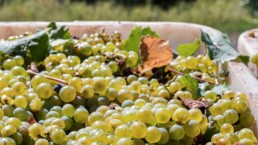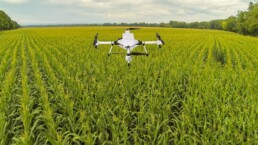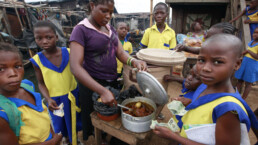Oliver O. Okumu
Oliver O. Okumu is a Future Africa Forum contributor and expert. Oliver’s speciality is agriculture and food production.
Share
One of the main challenges facing the ever growing world population is food security. The Food and Agriculture Organization (FAO) of the United Nations suggests that in order to feed the population, food production must increase by 70%. Increased rural to urban migration, climate change, changes in lifestyle and diet patterns put considerable pressure on the declining freshwater resources and biodiversity, loss of fertile land. Nearly 1.3 billion tons of food production in the world is wasted as a result of poor harvesting time, excessive rains and/or drought, contamination by microorganisms, and physical damage. Developing countries experience more of postharvest losses; therefore in order to achieve zero hunger by 2030, we need to ensure that no more food is lost. In developing world characterized by poor infrastructure and tropical weather, wastage as high as 40-50% is always experienced.
Postharvest loss can either be quantitative or qualitative loss. Quantitative losses occur when the amount of food reduces over time while qualitative losses include those that affect nutrient composition, viability, visual aesthetic appeal or breakage or contamination of food of a given product. Postharvest system comprises of activities carried out from the time of harvesting, handling, storage, processing, packaging, transportation, and marketing. In order to fight hunger, income generation and improvement of food security and livelihoods, postharvest losses require attention. Therefore, by reducing postharvest losses in food systems, we increase food availability worldwide.
Postharvest losses affect nutritional health, and have negative financial impacts on both consumers and farmers. Postharvest losses also deprive farmers of the opportunity to grow and strengthen their income generation activities. Due to inadequate storage capacities small scale farmers lose up to 40 percent of their seasonal harvest. As a result, majority of small scale farmers sell their produce immediately after harvest at a time when prices are low due to oversupply. The qualitative loss of food is estimated at 37% or 120–170 kg per year per capita in Sub Saharan Africa. However, the World Bank estimates the value of postharvest loss per year in SSA for all grains to be about $4 billion. The volume and value of these postharvest loss estimates are alarming highlighting the urgency to better understand and reduce postharvest food losses.
Key interventions at each post-harvest step:
- Harvesting
The time of harvesting is determined by the degree of maturity and weather conditions. Poor weather affects the operations during harvesting and usually increases the moisture content of the harvested products. Therefore, it is important to harvest at the proper maturity stage, at peak quality and when the weather conditions are favourable. For perishable goods, harvesting should be done with utmost efficiency to avoid injuries which might cause entry points for opportunistic pathogens.
- Drying
Majority of farmers in Africa rely on the sun to dry their produce. However, chilly weather accompanied by rains can result in serious post-harvest losses. When drying, damage to grains should be minimized and moisture levels reduced to 13% to prevent growth of fungal contaminants.
- Threshing/ Shelling
For grains, threshing should be delayed for some time after harvest and the crop stored in open cribs
- Handling and Packing
One should ensure that when handling perishable produce, care should be taken to ensure injuries are not inflicted on them. This will create a barrier to most of the opportunistic fungi. Injuries caused during handling stimulate physiological deterioration and dehydration. During packing in the field care must be taken to minimize physical damage that results from impact bruises due to piling bags.
- Transportation
For perishable produce, transportation during long distances should be done in temperature management systems. Produce must be arranged such that air circulation is made possible to reduce the heat released during respiration.
- Storage
The use of traditional storage systems should allow for ventilations, protection from rains and rodents and other pests. Storage interventions such as the use of and promotion of hermetic storage technologies (bags and silos) have been developed. Studies have shown that hermetic technologies can reduce postharvest losses and have a positive impact on households’ food and income security.
Postharvest technologies can contribute to food securities since they reduce postharvest losses. This will result in an increased amount of food that is available for households, thereby improving income generation and livelihoods. Practicing the highlighted activities to reduce postharvest losses complements other efforts to improve food security. There is also the need to incorporate cultural and economic adaption strategies to reduce food losses.
The views expressed in this article are those of the author alone and not the Future Africa Forum.
The views expressed in this article are those of the author and do not necessarily reflect the views of Future Africa Forum. Future Africa Forum is a pan-African policy think-tank and policy advisory consultancy headquartered in Nairobi, Kenya.



